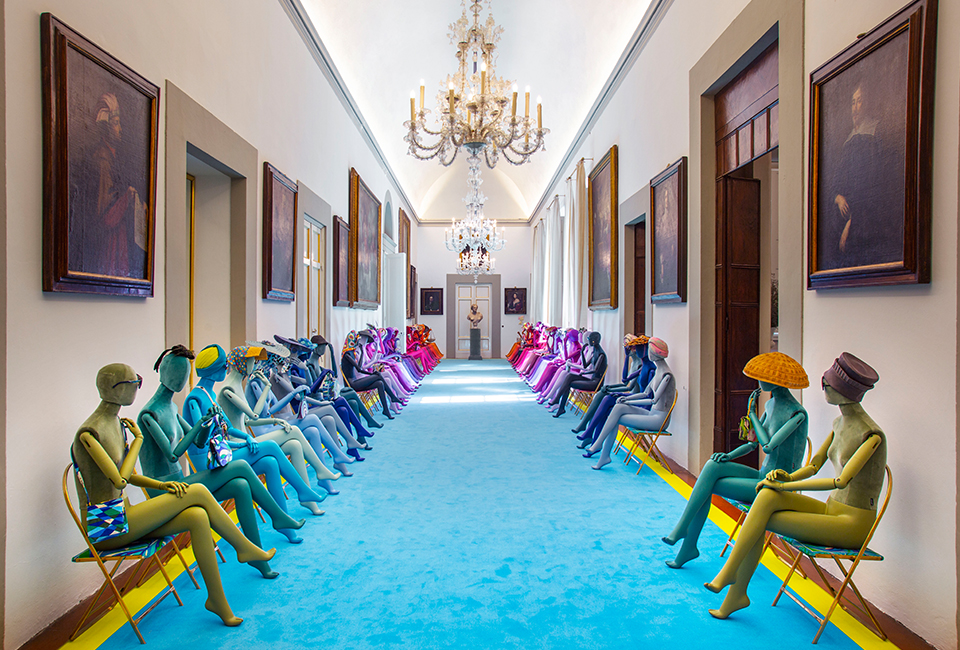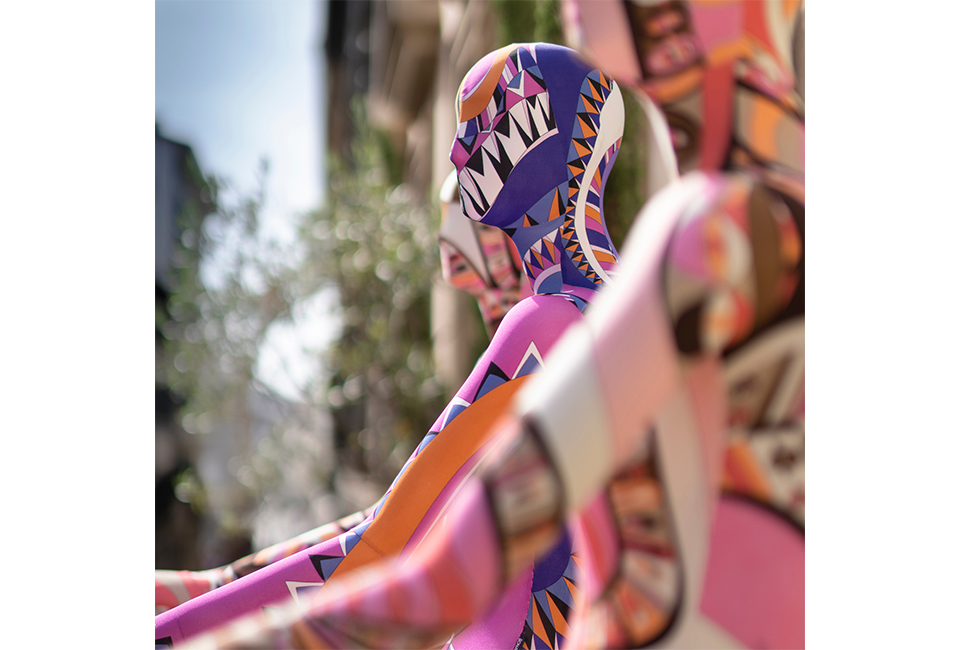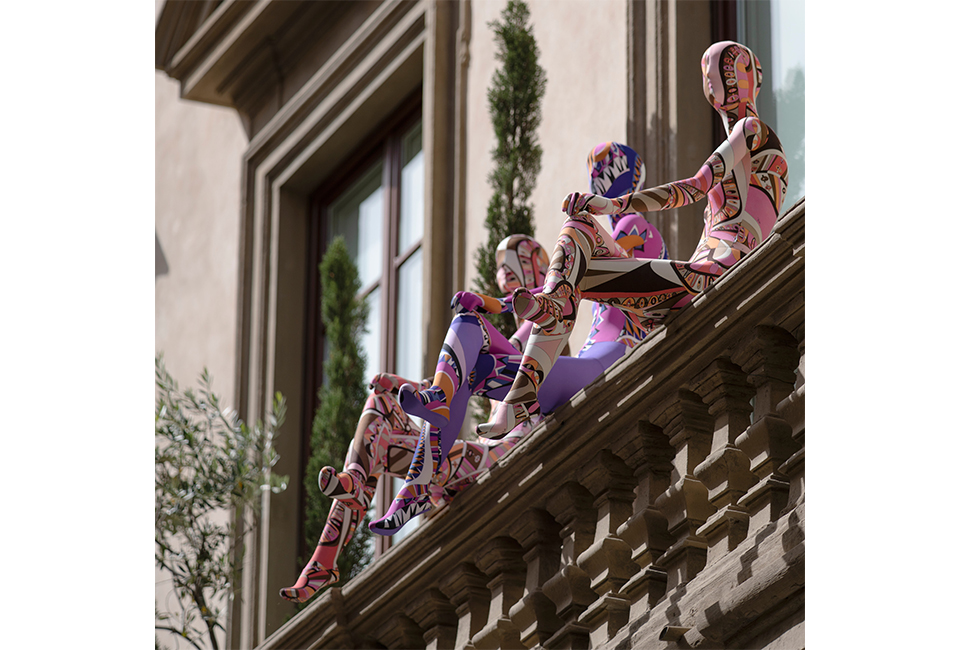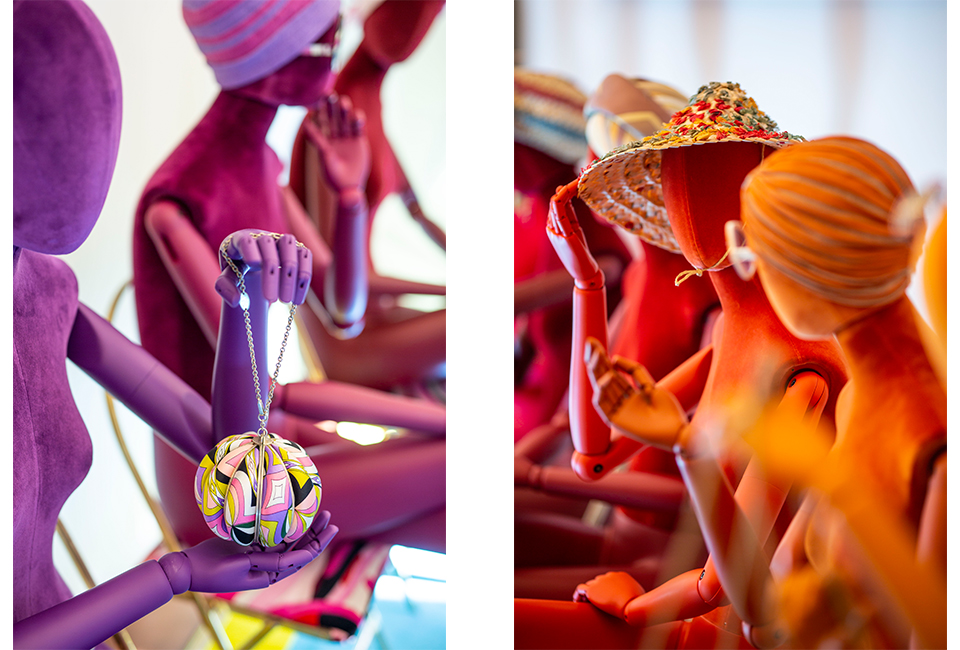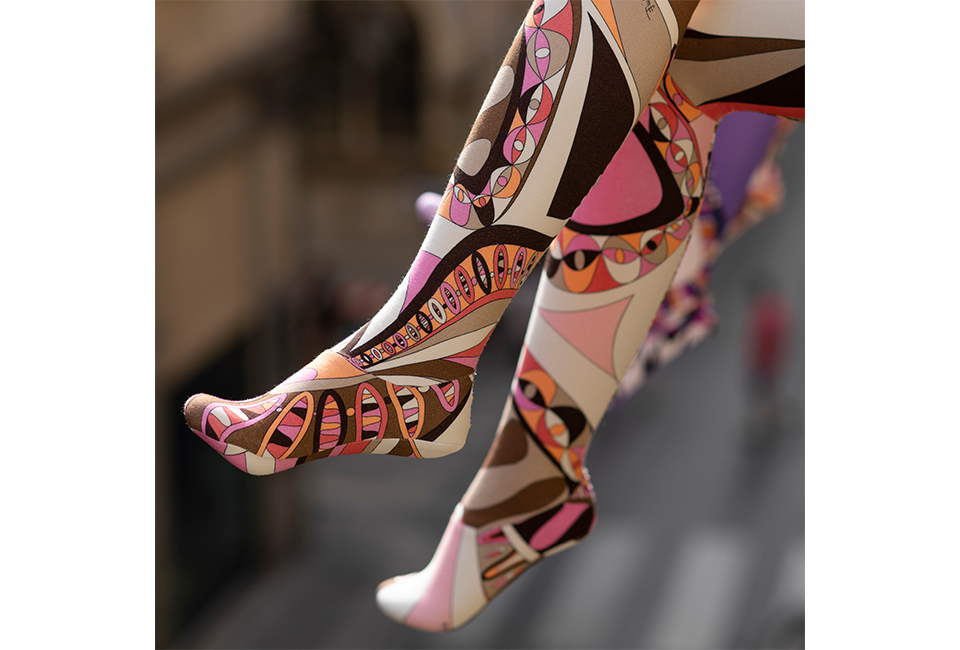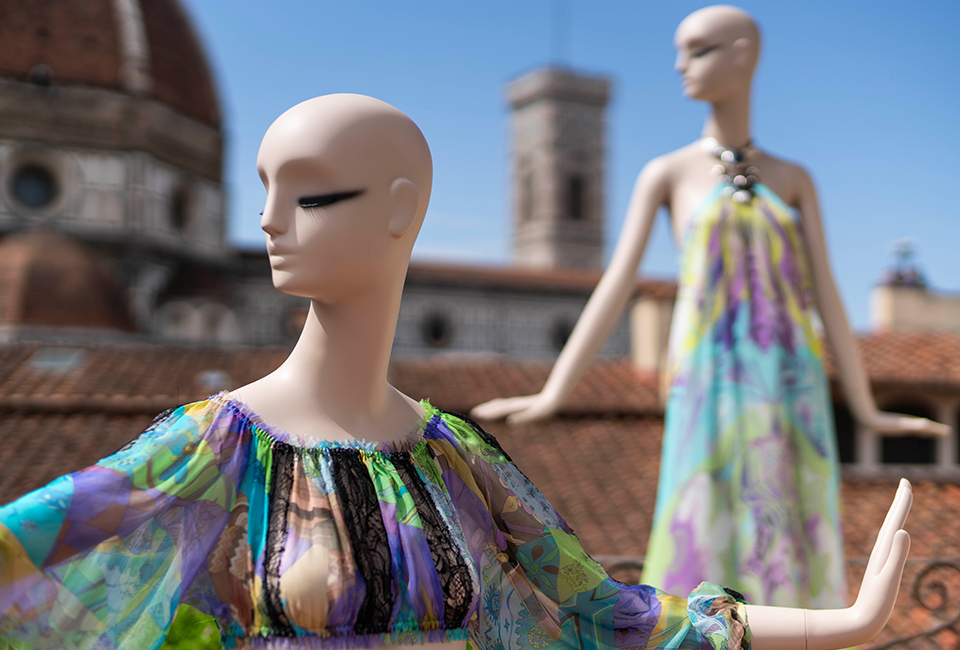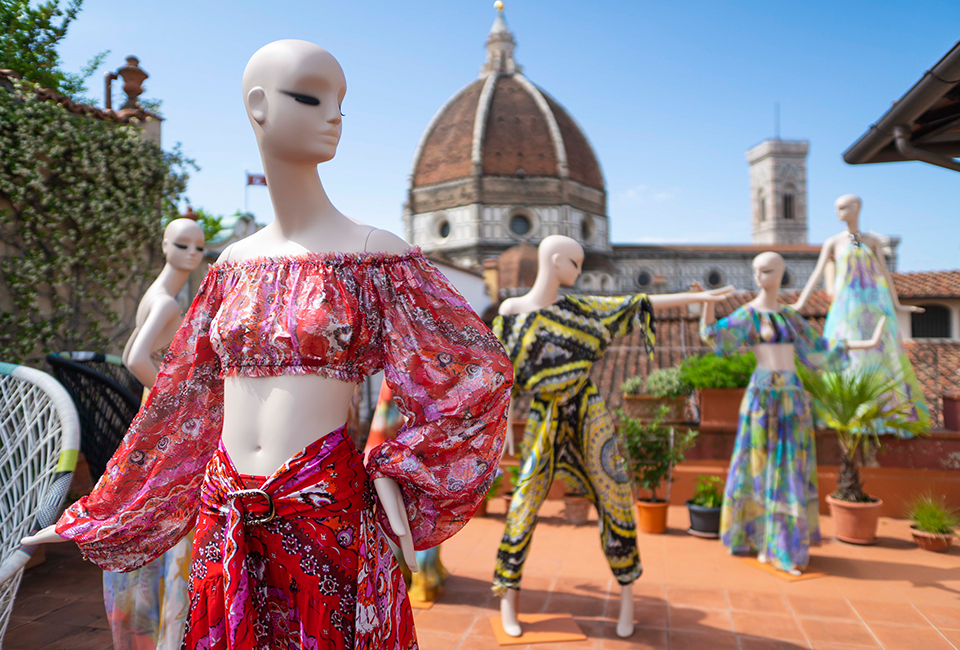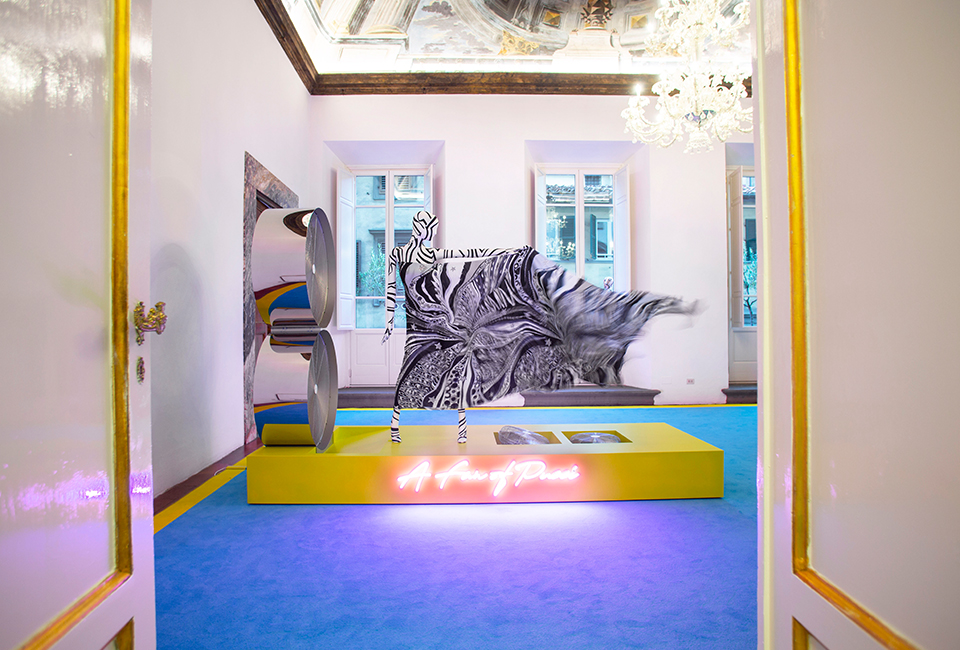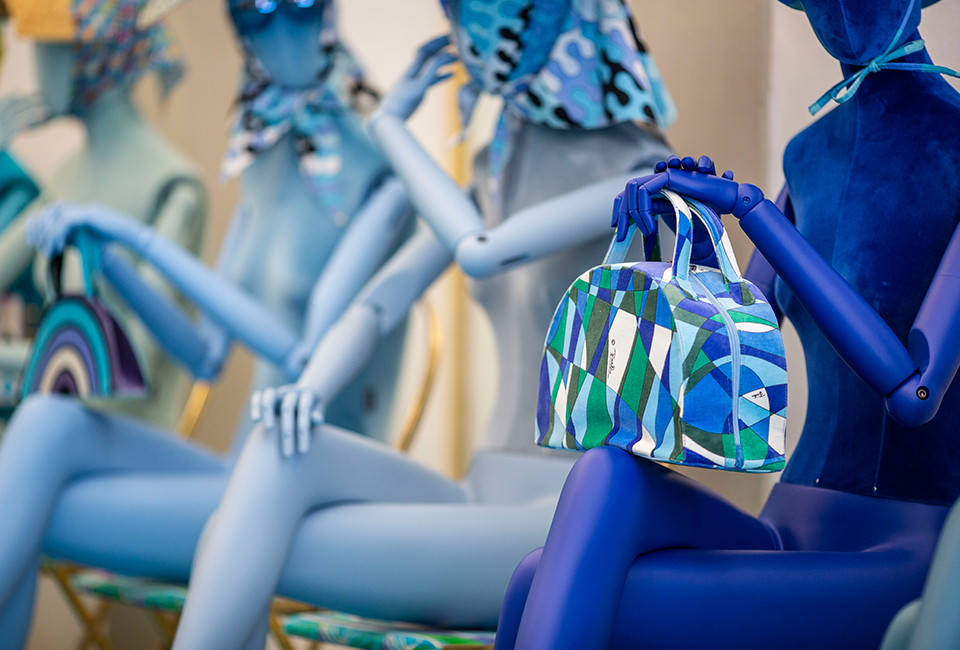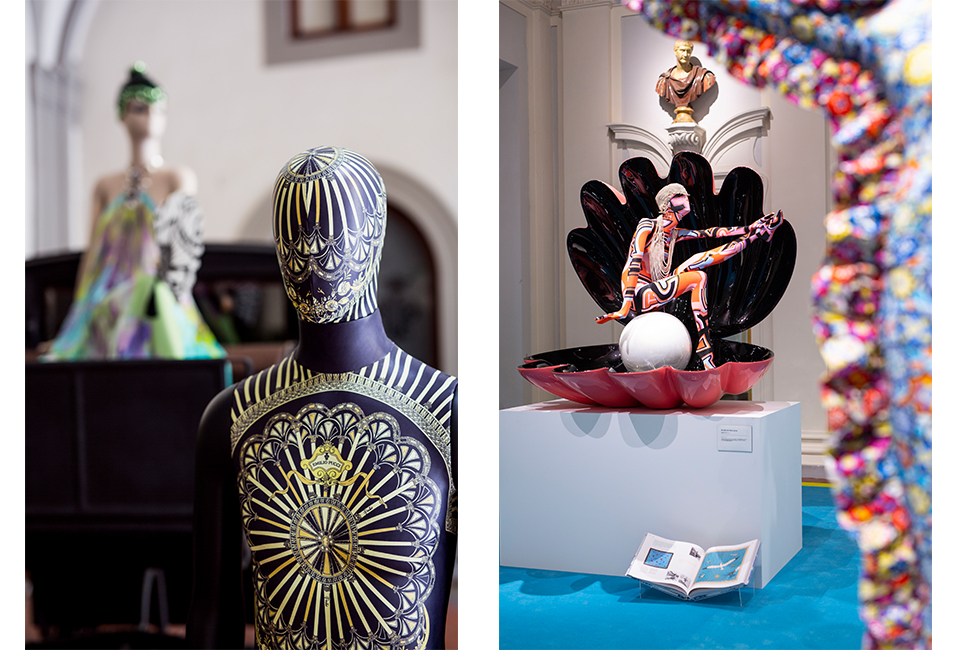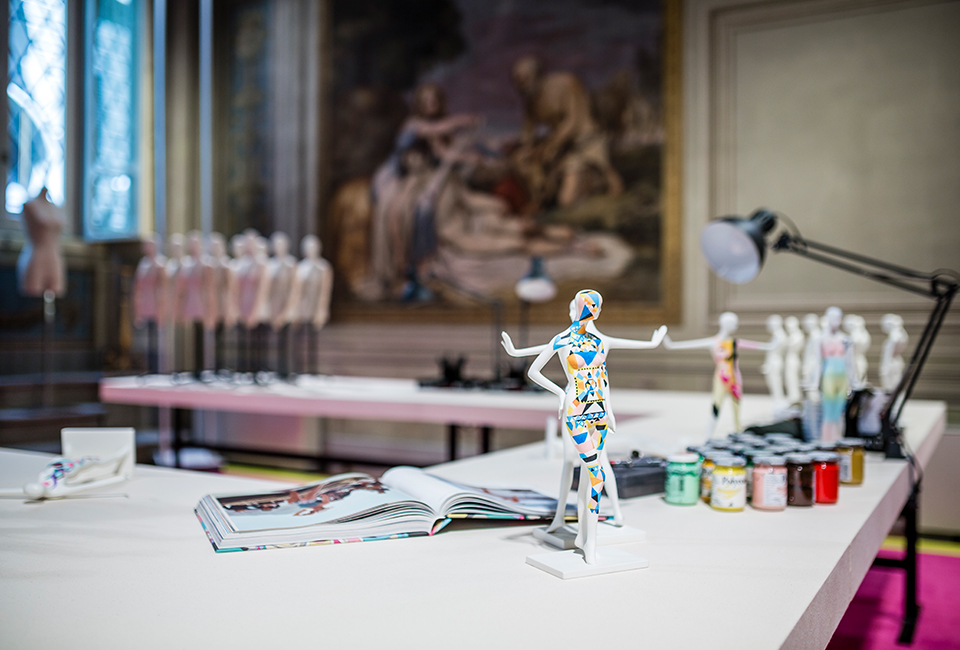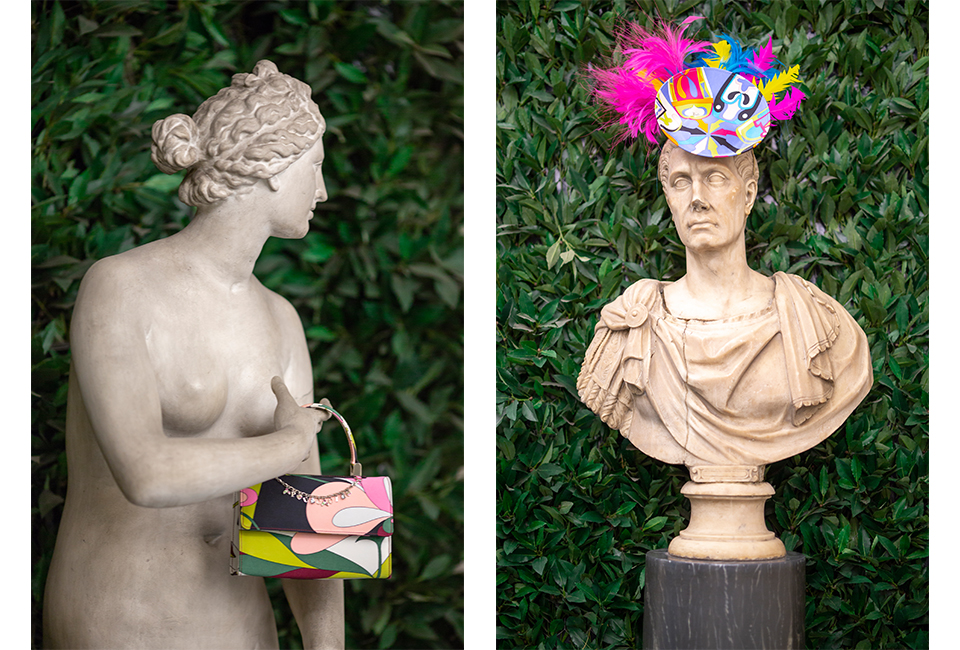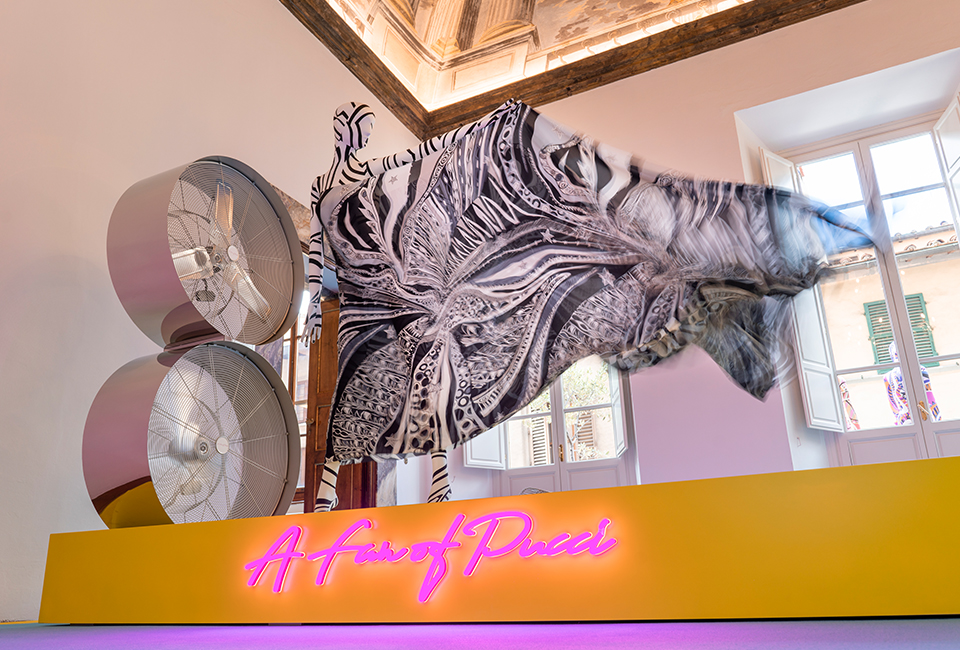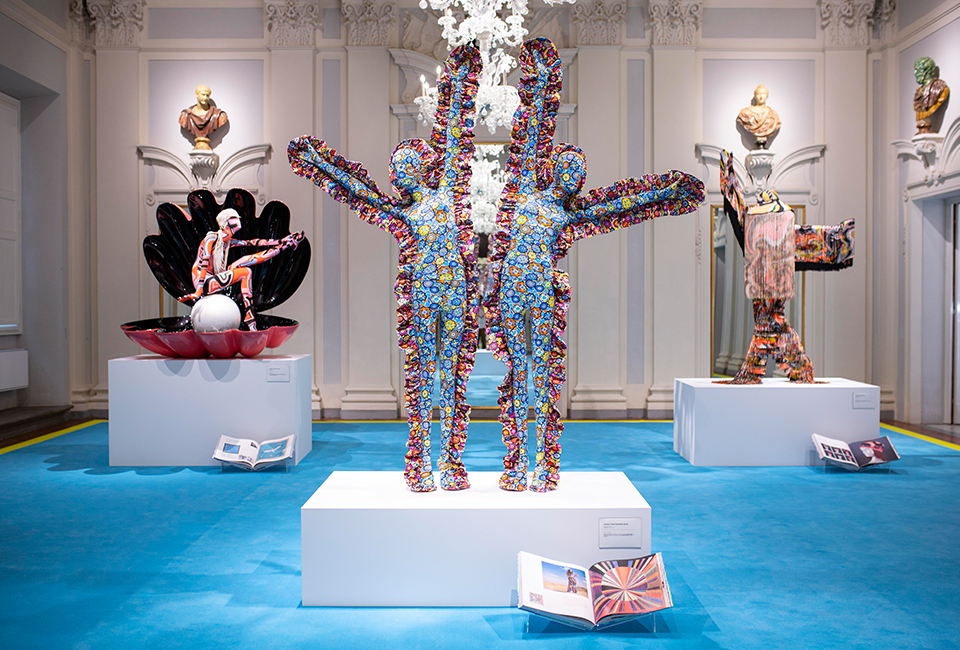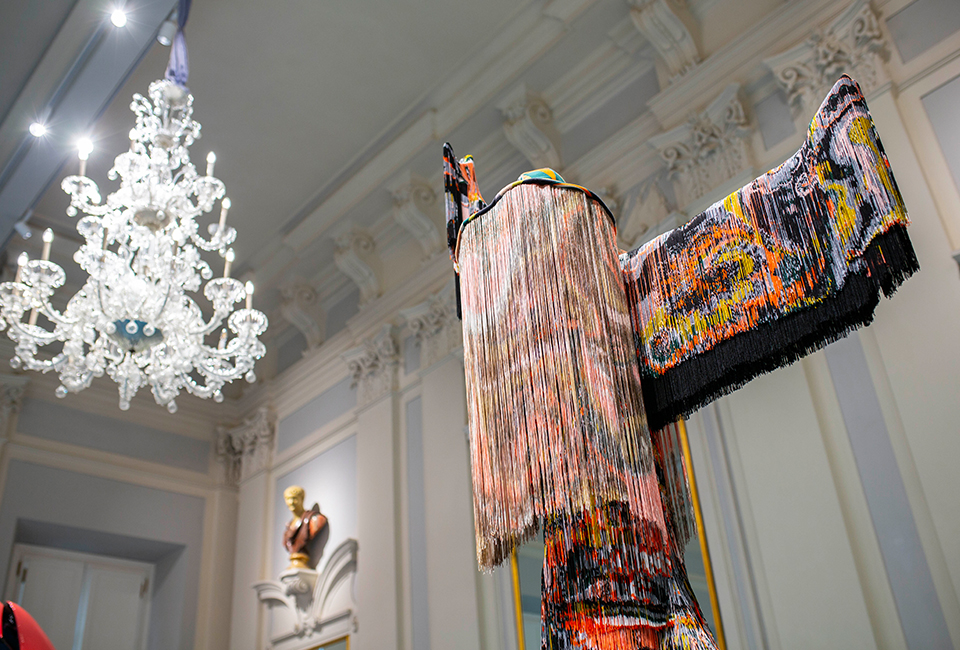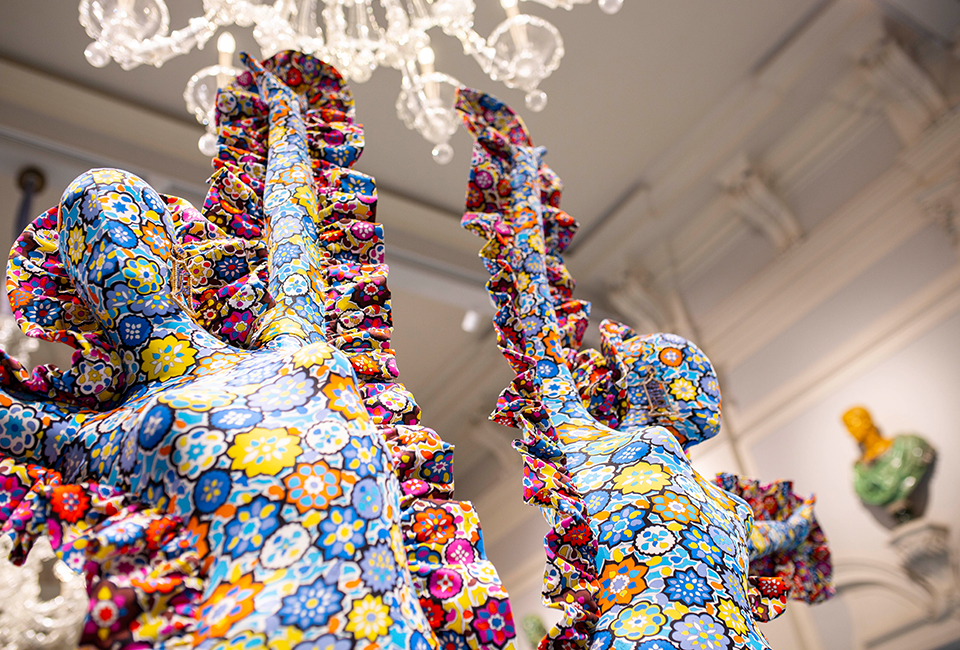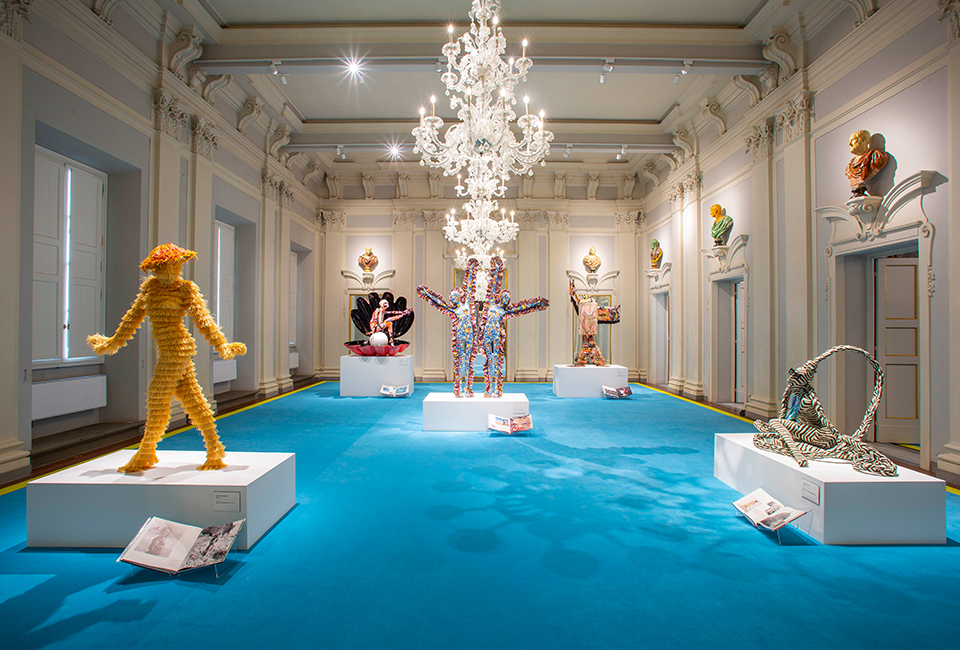Florence | June 2018 - Emilio Pucci and mannequin pioneer Bonaveri come together during Pitti Immagine Uomo to celebrate history and innovation in an exhibition exploring collective creativity and craftsmanship. Palazzo Pucci in Florence will be the venue for the event held from the 12th until the 15th June. Bonaveri, through its own artisanal skill will tell the story of Emilio Pucci’s heritage and future. Bonaveri’s mannequins and bust forms become the leading characters in a series of installations that explore the Pucci universe, demonstrating the brands significant role in the visual arts.
Bonaveri and Pucci have commissioned Emma Davidge - Creative Director of Chameleon Visual - to create an exhibition which leads the viewer through a series of installations that marry the aesthetic of each brand. The journey through the exhibition highlights Pucci’s design principles set against the unique interiors and renaissance architecture of Palazzo Pucci.
The courtyard hosts a number of over-sized mannequins and one of Bonaveri’s ‘Schläppi Giants’ wrapped in Pucci’s iconic ‘Vivara’ print. On the second floor of the Palazzo is Pucci’s immense colour library where a series of velvet coloured mannequins wear select accessories from the Pucci archive.
The story continues with a homage to Pucci’s continuing quest to enable the freedom of movement, told in a humorous installation of wind-swept black and white archival Pucciprints.
The ‘Sala Bianca’, the legendary palace ballroom, hosts a series of ironic installations that reflect the five material elements adopted by Pucci during his career. Bonaveri’s artisanal excellence is on display on the ground floor of the Palazzo.
Previously the home of the Emilio Pucci embroidery ateliers, this area reveals the inner workings of Bonaveri’s skilled creative team. Divided into three chapters; The Cutting Room; The Sewing Room and The Miniature Workshop – the rooms are complete with an in-house atelier where Bonaveri’s artisans bring the Pucci mannequins to life.
The journey ends with a visit to Marquis Emilio Pucci’s studio, where personal memorabilia are displayed, leading to the fitting room where a group of baby mannequins are watching over the spectacle of archived pieces. This project is the result of a conversation between Emma Davidge, creative director of Chameleon Visual, and Laudomia Pucci, who wanted to create a contemporary and innovative exhibition that reflects the rich history and savoir-faire shared between each Maison. “It’s always surprising how Florence and Pitti makes us celebrate fashion in creative ways. The marriage between history and innovation is deeply rooted in Florentine culture and that is why we decided to celebrate the history of our brands through a disruptive and unexpected way where we bring Pucci’s and Bonaveri’s best kept secrets to life!”. – Laudomia Pucci
"Bonaveri, a fan of Pucci” is an opportunity to cast light on the talent and expertise of artisanal skills that have contributed to the ‘Made in Italy’ brand. The craftsmanship that exists in companies like Pucci and Bonaveri manifests itself in the ability of men and women to create beauty; this is the true spirit of our exhibition " – Andrea Bonaveri
About Emilio Pucci
Born in 1914 to one of Florence’s oldest families, Emilio Pucci, the Marquis of Barsento, became a fashion phenomenon in the 1950s with a trailblazing vision that continues to reverberate today. Although he relinquished a private life of aristocratic leisure, the Marquis was nonetheless crowned “The Prince of Prints” by the international fashion press who were smitten by his bold, new designs and radical approach to fashion at the time. A major influence in contemporary fashion, Pucci’s legacy continues to be a major force behind the birth of the “made in Italy” style and a milestone in Italy’s sportswear concept.
His fashion career began unexpectedly in 1947 when he created a streamlined ski outfit - totally revolutionary with its sleek, tapered trousers and hooded parka, photographed on the slopes of Switzerland for Harper’s Bazaar. He then opened a boutique on Capri dedicated to simple, yet beautiful resort clothing (tight, colourful “Capri” pants, silk twill shirts, and striped jersey tops) that embodied the island’s natural beauty and refreshingly bright colours. The novel concept of designer ready-to-wear was a hit with the island’s sophisticated clientele who had instant access to wearable yet chic clothing.
Inspired by exotic cultures and by the natural landscapes of the Mediterranean, Pucci brought luscious, bright colour to his designs in an unparalleled way. A sophisticated fusion of colour -- lemon yellows, bougainvillea pinks, frosted lilacs, azure blue, almond green-- became the hallmark of Pucci design. The effect was glorious, joyful, and perfectly captured the new mood in fashion. Instantly recognisable, Pucci’s colour combinations exude energy and emotion and allow the designs of the clothes themselves to remain relatively simple.
About Bonaveri
Bonaveri was established in 1950 in Renazzo di Cento (FE). Today it simply means ‘High quality Mannequin’ and wherever there is quality fashion – in a shop, in a museum or in a photo shoot – a Bonaveri mannequin is there. The ability to combine manufacturing excellence with visionary research on form and shape has allowed Bonaveri to participate in and influence the birth, definition and growth of the fashion industry. Today Bonaveri produces around 20 thousand mannequins a year; Bonaveri Artistic Mannequins, Schläppi and B By Bonaveri collections reflect a synthesis of craftsmanship, research and innovation.
The Bonaveri headquarters is a coming together of craft, innovation and inspiration. A digital body scanning unit and a sculpture atelier is home to a group of sculptors that develop new shapes through clay and plaster modelling. The relationship with the major fashion brands has led Bonaveri to excel in the creation of bespoke mannequins, for the ability to combine the needs of wearability with the aesthetic ones.
In 2017 Bonaveri was the world’s first company to offer a biodegradable mannequin, developed through a new bioplastic and paint. BPlast is composed of 72% sugarcane derivatives and BPaint is a patented collection of colours created with natural dyes and solvents. Ethics and aesthetics have never been so closely related.
Credits of the exhibition
Art Direction: Chameleon Visual
Photo: Lapo Quagli - Lorenzo @studioquagli
Film: Satore Studio
Special thanks for the Art Room at Mary Fashion
Sponsor: Illy - Sanpellegrino – Ferrari
Facts & Figures: 115 mannequins, 31 busts, 100 miniatures, 1 giant, 360 kg of paint, 609 meters of fabric, 97 colors, 27 Pucci prints ... and much more
